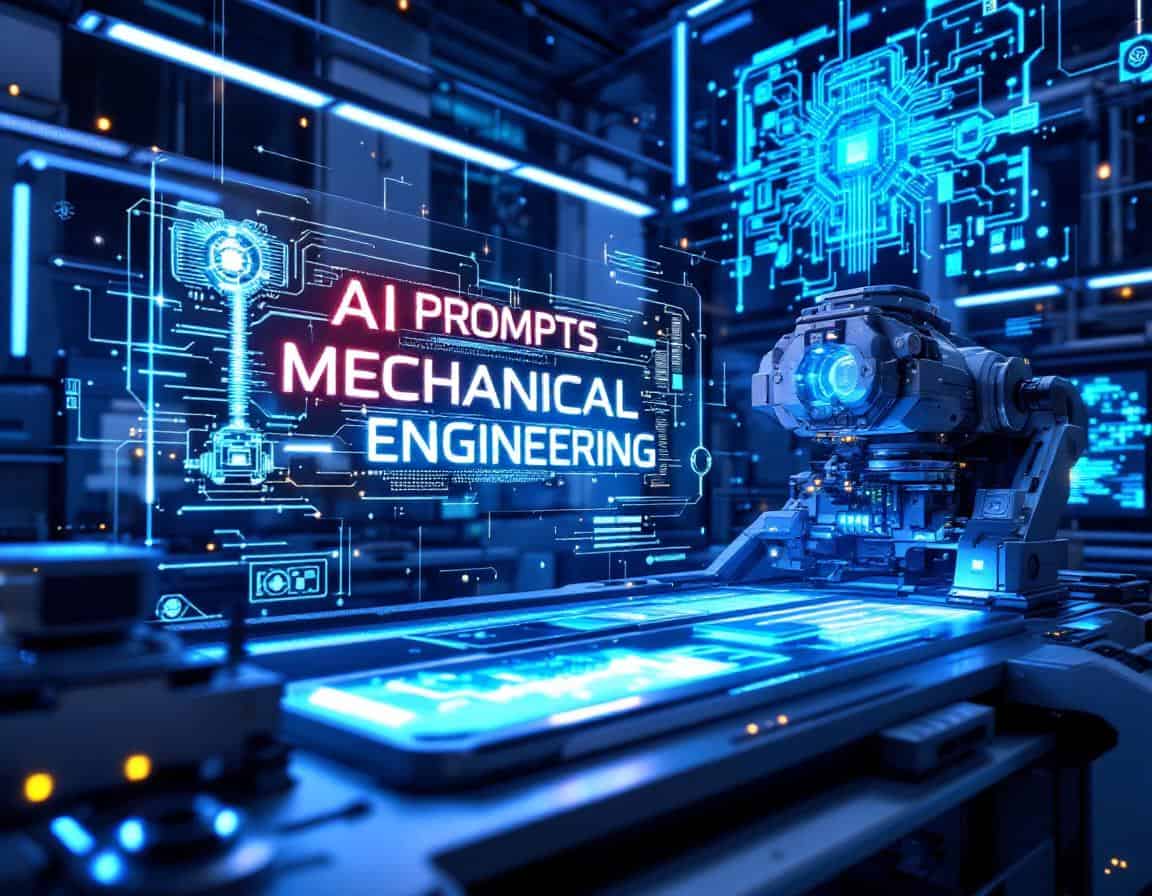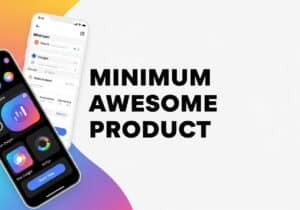
Las herramientas de IA en línea están transformando rápidamente la ingeniería mecánica al aumentar las capacidades humanas en diseño, análisis, fabricacióny mantenimiento. Estos sistemas de IA pueden procesar grandes cantidades de datos, identificar patrones complejos y generar soluciones novedosas mucho más rápido que los métodos tradicionales. Por ejemplo, la IA puede ayudarle a optimizar el rendimiento y la fabricabilidad de los diseños, acelerar simulaciones complejas, predecir las propiedades de los materiales y automatizar una amplia gama de tareas analíticas.
The prompts provided below will for example help on generative design, accelerate simulations (FEA/CFD), help on predictive maintenance where AI analyzes sensor data from machinery to forecast potential failures, enabling proactive servicing and minimizing downtime, help on material selection and much more.
- Esta página es específica para un dominio. Si lo desea, puede realizar búsquedas en todos los dominios y según todos los criterios en nuestro >. Directorio AI Prompts <, dedicado a diseño de producto y innovación.
- Dados los recursos del servidor y el tiempo, los propios avisos están reservados sólo a los miembros registrados, y no son visibles a continuación si no se ha iniciado sesión. Puede registrarse, 100% gratis:
- Evaluación de riesgos y análisis de seguridad
- Ingeniería mecánica
AI Prompt to Manufacturing Cell Hazard Identification
- Mejora continua, Ergonomía, Estudio de peligros y operabilidad (HAZOP), Human Factors, Manufactura esbelta, Mejora de procesos, Análisis de riesgos, Gestión de riesgos, Seguridad
Identifies potential safety hazards in a new or modified manufacturing cell layout based on its description processes and human interaction points. This helps in proactively addressing safety concerns during the design phase. Output is a categorized markdown list.
Salida:
- Markdown
- no requiere Internet en directo
- Fields: {cell_layout_description} {processes_involved_list_csv} {human_interaction_points_text}
- Best for: Proactively identifying and categorizing potential safety hazards in manufacturing cell layouts based on equipment processes and human interaction points.
- Evaluación de riesgos y análisis de seguridad
- Ingeniería mecánica
AI Prompt to Mitigation Strategies for Vibration Failures
- Mejora continua, Análisis de fallos, Ingeniería Mecánica, Algoritmos de mantenimiento predictivo, Mejora de procesos, Control de calidad, Gestión de riesgos, Análisis de vibraciones
Suggests and elaborates on potential mitigation strategies for vibration-induced failures in specified mechanical equipment given a summary of vibration data and any current attempts. This helps engineers find solutions to improve reliability. Output is a markdown list.
Salida:
- Markdown
- no requiere Internet en directo
- Fields: {equipment_description_text} {vibration_data_summary_text} {current_mitigation_attempts_text}
- Best for: Assisting mechanical engineers in identifying and evaluating various mitigation strategies for vibration-induced failures based on equipment type and vibration characteristics.
- Evaluación de riesgos y análisis de seguridad
- Ingeniería mecánica
AI Prompt to Comprobación del cumplimiento de la seguridad en el diseño de máquinas
- Diseño para la fabricación (DfM), Diseño para la sostenibilidad, Evaluación de Impacto Ambiental, Ergonomía, Seguro de calidad, Control de calidad, Gestión de riesgos, Seguridad
Evalúa las características del diseño de una máquina comparándolas con fragmentos proporcionados por el usuario de las cláusulas pertinentes de las normas de seguridad para identificar posibles áreas de incumplimiento. Esto ayuda a diseñar máquinas más seguras desde el principio. El resultado es una lista de comprobación.
Salida:
- Markdown
- no requiere Internet en directo
- Campos: {machine_design_features_description_text} {safety_standard_clauses_text} {país_de_operación_para_el_contexto}
- Ideal para: Facilitar las revisiones de conformidad de seguridad en las primeras fases comprobando las características descritas de la máquina con cláusulas específicas de las normas de seguridad pertinentes proporcionadas por el usuario.
- Consideraciones éticas y análisis de impacto
- Ingeniería mecánica
AI Prompt to Evaluación ética de riesgos en proyectos mecánicos
- Ingeniería ambiental, Impacto ambiental, Ingeniería Mecánica, Gestión de proyectos, Gestión de riesgos, Seguridad, Prácticas de sostenibilidad, Desarrollo sostenible
Este ejercicio guía a la IA para que analice los riesgos éticos y las consecuencias sociales de un proyecto específico de ingeniería mecánica, teniendo en cuenta factores medioambientales, de seguridad y de impacto social. Requiere una descripción detallada del proyecto y la aplicación prevista para proporcionar una evaluación estructurada de los riesgos éticos con recomendaciones de medidas de mitigación.
Salida:
- Texto
- no requiere Internet en directo
- Campos: {descripción_del_proyecto} {aplicación_prevista}
- Lo mejor para: El mejor para evaluar los retos éticos y las repercusiones sociales de los nuevos proyectos de ingeniería mecánica.
- Consideraciones éticas y análisis de impacto
- Ingeniería mecánica
AI Prompt to Generador de informes de sostenibilidad e impacto ambiental
- Ingeniería ambiental, Impacto ambiental, Análisis del ciclo de vida (ACV), Evaluación del impacto del ciclo de vida (LCIA), Métricas de sostenibilidad, Desarrollo sostenible, Innovación sostenible, Materiales sostenibles, Prácticas sostenibles
Esta solicitud pide a la IA que genere un informe completo de sostenibilidad e impacto medioambiental para una tecnología o proceso de ingeniería mecánica determinado, teniendo en cuenta el análisis del ciclo de vida, los materiales utilizados y el consumo de energía. El usuario introduce el nombre de la tecnología y los parámetros clave.
Salida:
- Markdown
- no requiere Internet en directo
- Campos: {nombre_tecnología} {parámetros_clave}
- Lo mejor para: Lo mejor para elaborar documentación estructurada sobre el impacto ambiental de las innovaciones de ingeniería.
- Consideraciones éticas y análisis de impacto
- Ingeniería mecánica
AI Prompt to Análisis de las implicaciones políticas de las innovaciones mecánicas
- Impacto ambiental, Tecnologías medioambientales, Estrategia de innovación, Gestión de calidad, Reglamento, Gestión de riesgos, Normas, Prácticas de sostenibilidad, Desarrollo sostenible
Esta instrucción pide a la IA que evalúe las implicaciones políticas y normativas de la implantación de una nueva innovación en ingeniería mecánica. El usuario proporciona la descripción de la innovación y la región o el país de destino para adaptar el análisis a la legislación y las normas pertinentes.
Salida:
- Texto
- requiere Internet en directo
- Campos: {innovation_description} {target_region}
- Lo mejor para: Lo mejor para comprender y navegar por los marcos jurídicos y políticos que afectan a los proyectos de ingeniería mecánica
- Consideraciones éticas y análisis de impacto
- Ingeniería mecánica
AI Prompt to Generador de escenarios de dilemas éticos para ingenieros
- Mejora continua, Diseño para la sostenibilidad, Fundamentos de ingeniería, Impacto ambiental, Diseño centrado en el ser humano, Innovación, Ingeniería Mecánica, Gestión de riesgos
Este ejercicio pide a la IA que cree escenarios realistas de dilemas éticos adaptados específicamente a los ingenieros mecánicos y basados en un tema o tecnología proporcionados. Ayuda a los profesionales a anticipar y debatir situaciones difíciles que requieren una toma de decisiones ética.
Salida:
- JSON
- no requiere Internet en directo
- Campos: {topic}
- Lo mejor para: Lo mejor para formar y preparar a los ingenieros para afrontar retos éticos en su trabajo
- Traducción y adaptación lingüística
- Ingeniería mecánica
AI Prompt to Traducción de especificaciones técnicas
- Documentación de diseño, Diseño para la fabricación (DfM), Fundamentos de ingeniería, Ingeniería Mecánica, Mejora de procesos, Desarrollo de productos, Seguro de calidad, Gestión de calidad
Traduce un bloque de especificaciones técnicas de un componente o sistema mecánico de un idioma de origen a un idioma de destino garantizando la precisión terminológica. Esto facilita la colaboración internacional y la documentación del producto. El resultado es el texto traducido.
Salida:
- Texto
- no requiere Internet en directo
- Campos: {nombre_o_código_del_idioma_de_origen} {nombre_o_código_del_idioma_de_objetivo} {texto_de_las_especificaciones_técnicas}
- Ideal para: Traducir con precisión especificaciones técnicas de componentes mecánicos de un idioma a otro manteniendo la terminología y el significado correctos para su uso internacional.
- Asistencia para propuestas de subvención y redacción científica
- Ingeniería mecánica
AI Prompt to Asistente de redacción de resúmenes de propuestas de subvención
- Innovación, Ingeniería Mecánica, Gestión de proyectos, Investigación y desarrollo
Esta herramienta ayuda a los ingenieros mecánicos a redactar un resumen claro y convincente para una propuesta de subvención. El usuario indica el enfoque de la investigación, los objetivos y el impacto previsto. La IA devuelve un resumen estructurado adecuado para las solicitudes de financiación.
Salida:
- Texto
- no requiere Internet en directo
- Campos: {enfoque_de_la_investigación} {objetivos} {impacto_esperado}
- Lo mejor para: Lo mejor para generar resúmenes de propuestas pulidos para mejorar el éxito de la financiación.
- Traducción y adaptación lingüística
- Ingeniería mecánica
AI Prompt to Simplificación del resumen de investigación
- Fabricación aditiva, Diseño para fabricación aditiva (DfAM), Pensamiento de diseño, Ingeniería Mecánica, Investigación y desarrollo, Experiencia de usuario (UX)
Simplifica el resumen de un trabajo de investigación complejo sobre un tema de ingeniería mecánica en un lenguaje sencillo adecuado para un público de ingeniería general o para la comunicación con no especialistas. Su objetivo es transmitir el mensaje central y el significado sin excesiva jerga. El resultado es un texto.
Salida:
- Texto
- no requiere Internet en directo
- Campos: {research_paper_abstract_text} {target_audience_description}
- Ideal para: Hacer accesible la compleja investigación en ingeniería mecánica simplificando los resúmenes técnicos para un público más amplio, como estudiantes de gestión o no especialistas.



























¿Estamos asumiendo que la IA siempre puede generar las mejores indicaciones en ingeniería mecánica? ¿Cómo se generan?
¿Hará la IA innecesarios a los ingenieros humanos?
Publicaciones relacionadas
Últimas publicaciones y patentes sobre perovskitas
Últimas publicaciones y patentes sobre grafeno
45+ Science Tricks for Games and Marketing: Data-Driven and Statistical Tricks
Uso o abuso de 25 sesgos cognitivos en el diseño y la fabricación de productos
Revised NIOSH Lifting Equation in Bench Ergonomics
Dark Web vs Darknet vs Deep Web: 101 y más